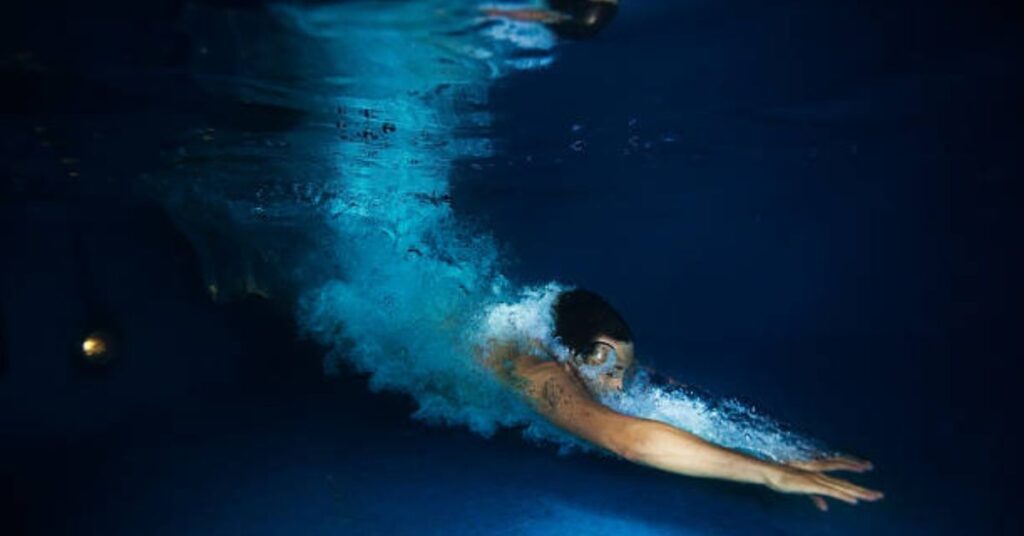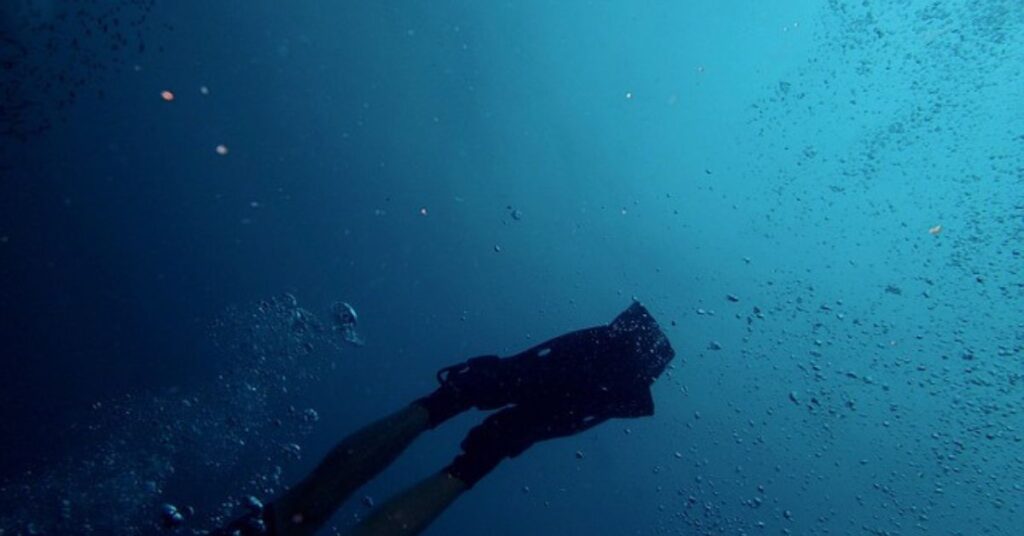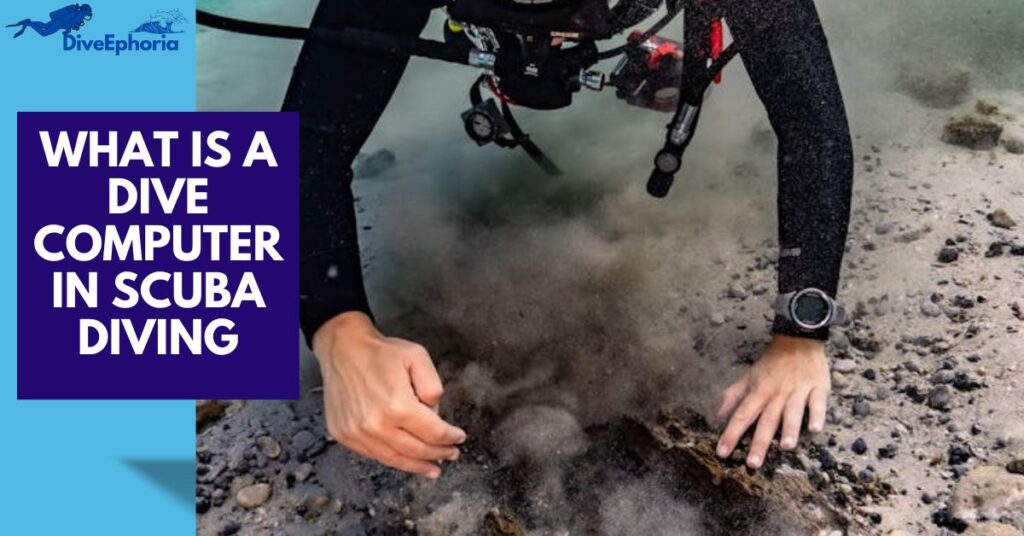
Introduction
Scuba diving is an exhilarating experience that opens the door to a mesmerizing underwater world. Whether you’re exploring coral reefs, sunken shipwrecks, or vibrant marine life, diving offers adventure like no other. But with this excitement comes responsibility—especially when it’s time to return to the surface.
One of the most common—and dangerous—mistakes divers make is ascending too quickly. Rapid ascents can lead to severe health issues like decompression sickness (the bends), arterial gas embolisms, and lung overexpansion injuries. These conditions don’t just ruin a dive—they can be life-threatening if not understood and prevented.
If you’ve ever wondered what really happens to your body during a fast ascent, or how to avoid these dangers altogether, this guide is for you. We’ll break down the science behind rapid ascents, the symptoms to watch for, and the most up-to-date lifesaving tips and ascent strategies for 2025. Whether you’re a beginner or an experienced diver, understanding and following proper ascent practices could save your life.
Table of Contents
What Happens if You Ascend Too Fast While Diving?

Ascending too fast while scuba diving is one of the most dangerous mistakes a diver can make. It disrupts the body’s ability to release dissolved gases safely, especially nitrogen, which is absorbed into your tissues during a dive. As you ascend and pressure decreases, this nitrogen expands and must be released gradually. Rising too quickly can cause nitrogen bubbles to form in the bloodstream, leading to serious medical conditions that can be disabling—or even fatal.
Here are the top three health risks associated with an unsafe, rapid ascent:
1. Decompression Sickness (DCS) – “The Bends”
Decompression sickness, often called “the bends,” is the most well-known danger of a fast ascent. It happens when nitrogen bubbles form in your tissues and blood due to a rapid drop in pressure. These bubbles can lodge in joints, spinal cord, or even the brain, causing a range of symptoms from mild to life-threatening.
Common symptoms of DCS include:
- Sudden joint or muscle pain (especially in elbows, shoulders, knees, and ankles)
- Dizziness, nausea, or confusion
- Unusual fatigue after surfacing
- Numbness or tingling, especially in the limbs
- Skin rashes or itching
- Difficulty breathing or chest tightness
Real-world data: According to the Divers Alert Network (DAN), an estimated 1,000 cases of decompression sickness are reported annually in the U.S. alone, with many more occurring worldwide.
Prevention Tip: Always follow your dive computer or dive table for proper ascent rates. Incorporate a safety stop at 15–20 feet (5–6 meters) for 3–5 minutes on every dive to allow nitrogen to be released safely.
2. Pulmonary Barotrauma – Lung Overexpansion Injury
Another serious consequence of ascending too quickly is pulmonary barotrauma, or a lung overexpansion injury. As pressure drops during ascent, the air in your lungs expands. If you hold your breath, that expanding air can cause the delicate lung tissue to rupture.
This rupture may allow air to leak into spaces where it doesn’t belong—such as:
- The pleural cavity, causing a collapsed lung (pneumothorax)
- The bloodstream, potentially resulting in an arterial gas embolism (AGE)
Symptoms of pulmonary barotrauma may include:
- Sharp chest pain after surfacing
- Shortness of breath or difficulty breathing
- A bluish tint to the lips or fingers (cyanosis)
- Swelling in the neck or chest due to trapped air
- Coughing up blood in extreme cases
Actionable Tip: Never hold your breath while ascending—even for a second. Practice continuous, relaxed exhalation to allow expanding air to escape naturally, especially on emergency ascents.
3. Arterial Gas Embolism (AGE) – A Medical Emergency
Arterial gas embolism (AGE) is one of the most serious—and immediate—dangers of ascending too fast. It occurs when air bubbles enter the arteries and block blood flow to critical organs such as the brain, heart, or lungs.
This condition can result from pulmonary barotrauma or any situation where expanding air finds its way into the circulatory system.
Symptoms of arterial gas embolism include:
- Sudden, unexplained loss of consciousness
- Weakness, numbness, or paralysis—often one-sided
- Severe headache or visual disturbances
- Seizures or confusion
- Chest pain or irregular heartbeat
AGE symptoms often begin within minutes of surfacing and require immediate emergency treatment, typically in a hyperbaric oxygen chamber.
Lifesaving Tip: If you suspect AGE, call emergency medical services immediately and administer 100% oxygen if available. Time is critical to avoid permanent damage or death.
Final Thoughts on Ascent Safety
Proper diving ascent safety is not optional—it’s a non-negotiable part of scuba diving. The key to staying safe is to ascend slowly and steadily, allow your body time to eliminate nitrogen, and avoid breath-holding at all costs.
By understanding and respecting how your body responds to pressure changes, you can enjoy the underwater world without unnecessary risk. Whether you’re a beginner or a seasoned diver, following these guidelines and using reliable dive computers and ascent protocols is crucial for your health and survival.
Why Is a Slow Ascent in Scuba Diving Critical?

A slow and controlled ascent is one of the most important safety measures in scuba diving. It’s not just about following a rule—it’s about protecting your body from the dangerous effects of pressure changes, particularly how your body deals with nitrogen absorption and release during a dive.
When you ascend too quickly, nitrogen that’s dissolved in your tissues doesn’t have enough time to safely exit your body. Instead, it can form dangerous bubbles in your bloodstream, leading to conditions like decompression sickness (DCS), pulmonary barotrauma, and arterial gas embolism.
A slow ascent allows your body the time it needs to safely eliminate excess nitrogen, greatly reducing the risk of life-threatening complications.
Common Symptoms of Ascending Too Fast While Scuba Diving
Rapid ascents can trigger a variety of physical symptoms. Recognizing these early signs is crucial for getting help in time:
- Joint or muscle pain (especially in the arms and legs)
- Extreme fatigue or weakness
- Dizziness or confusion
- Numbness or tingling in the hands and feet
- Chest pain or difficulty breathing
- Bluish skin (a sign of poor oxygen circulation)
- Sudden unconsciousness (in severe cases)
These symptoms often indicate decompression sickness or arterial gas embolism, both of which require immediate medical treatment—preferably in a hyperbaric chamber.
Critical Ascent Guidelines to Follow
To prevent these conditions and ensure a safe dive, every diver should strictly adhere to the following slow-ascent best practices:
1. Stick to the Recommended Ascent Rate
The maximum safe ascent rate recommended by most diving organizations, including PADI and NAUI, is no faster than 30 feet (10 meters) per minute.
Your dive computer or depth gauge is your best tool for monitoring this. Many modern dive computers have visual or audio alerts if you’re rising too quickly.
✅ Pro Tip: If you’re unsure about your rate, slow down and hover briefly—slower is always safer than too fast.
2. Perform a Safety Stop – Every Time
A safety stop is a standard practice that gives your body an extra margin of safety by allowing nitrogen to off-gas more effectively.
- Depth: 15–20 feet (5–6 meters)
- Duration: 3–5 minutes
- When to do it: Every dive deeper than 30 feet (10 meters)—even if your dive computer doesn’t require it.
Although a safety stop is sometimes labeled as “optional,” it has been proven to significantly reduce the risk of DCS. In modern diving, it’s considered best practice, especially for repetitive or deep dives.
✅ Pro Tip: Use this time to check your air supply, review your dive buddy’s condition, and begin your post-dive checklist.
3. Monitor Your Breathing – Never Hold Your Breath
One of the golden rules of scuba diving is: Never hold your breath while ascending.
As you rise, the pressure decreases, and the air in your lungs expands. Holding your breath can lead to lung over-expansion injuries, such as:
- Pulmonary barotrauma
- Collapsed lung (pneumothorax)
- Arterial gas embolism (AGE)
The simple solution? Breathe continuously and naturally throughout your ascent. Your regulator will supply air at the appropriate pressure, so there’s no need to panic or rush.
✅ Bonus Tip: Practice deep, slow breathing underwater to keep calm and control your buoyancy more effectively.
Final Thoughts: Slow Ascent = Safe Diver
Understanding why a slow ascent is critical isn’t just for dive exams—it’s about protecting your life. Every diver, from beginner to expert, should make slow, safe ascents a habit on every dive.
By following these guidelines—sticking to the proper ascent rate, incorporating a safety stop, and maintaining proper breathing techniques—you significantly lower your risk of encountering dangerous post-dive conditions.
Real-Life Examples of Rapid Ascent Diving Risks

Understanding the dangers of ascending too quickly isn’t just theoretical—real-life diving accidents prove how critical proper ascent techniques are. These incidents serve as powerful reminders of why divers must strictly follow scuba diving ascent guidelines to avoid potentially life-threatening consequences.
Let’s take a look at a true-to-life case that highlights the risks involved.
🚨 Case Study: A Rapid Ascent Incident in Florida (2022)
In 2022, a recreational scuba diver in Florida suffered a serious medical emergency due to a rapid ascent from an 80-foot (24-meter) dive. The diver, relatively new to deep diving, began to feel anxious during the ascent and rushed to the surface, skipping the standard safety stop.
Within minutes of surfacing, the diver experienced:
- Severe joint pain, especially in the knees and shoulders
- Shortness of breath and chest tightness
- Dizziness and overwhelming fatigue
Paramedics recognized the signs of decompression sickness (DCS) and transported the diver to a hyperbaric treatment facility. Fortunately, the diver recovered after receiving oxygen therapy in a recompression chamber. However, the incident underscores how easily panic or inexperience can result in life-threatening outcomes—even for recreational divers.
🔍 Lessons Learned from the Incident
✅ 1. Always Use a Dive Computer to Monitor Your Ascent Rate
Modern dive computers provide real-time feedback on your ascent speed, depth, and no-decompression limits. Many models alert divers if they’re ascending faster than the recommended 30 feet (10 meters) per minute. In this case, the diver was not using a computer and relied solely on instinct and a depth gauge—leading to critical misjudgment.
Takeaway: Relying on a dive computer helps prevent human error and keeps you informed of ascent safety zones at all times.
✅ 2. Never Skip the Safety Stop – Even During Stressful Situations
The diver’s decision to skip the safety stop played a significant role in the development of decompression sickness. Even in stressful situations—such as low air, cold, or visibility issues—it’s essential to pause at 15–20 feet (5–6 meters) for at least 3 minutes.
Takeaway: Treat the safety stop as non-negotiable. It’s your body’s opportunity to safely off-gas nitrogen and stabilize before surfacing.
Real-World Diving Safety: A Matter of Habit, Not Luck
This case is not unique. Every year, dozens of divers are treated for DCS, arterial gas embolisms, and lung injuries caused by improper ascent techniques. In many cases, the root cause is haste, inattention, or lack of training.
Whether you’re diving in warm tropical waters or exploring cold northern wrecks, ascent safety should always be part of your routine. The ocean is unpredictable—but your approach to diving safety should never be.
Pro Diver Advice: How to Stay Ascent-Safe Every Time
- Use a reliable dive computer—never guess your ascent rate.
- Establish neutral buoyancy before ascending to avoid accidental speed.
- Always do a safety stop, even on shallow dives.
- Plan your dive and dive your plan—know your limits and stick to them.
- Practice controlled breathing to stay calm and reduce stress during ascents.
Common Symptoms of Ascending Too Quickly

A fast ascent during a scuba dive can lead to serious and potentially fatal medical conditions. Recognizing the early warning signs of these conditions—such as decompression sickness (DCS), pulmonary barotrauma, or arterial gas embolism (AGE)—can make the difference between a safe recovery and a life-threatening emergency.
Whether you’re a new or experienced diver, it’s vital to know what to look for if you or your dive buddy surface too quickly.
Here are the most common symptoms of ascending too fast while diving, along with what they may indicate:
⚠️ 1. Fatigue or Extreme Tiredness
One of the most frequently overlooked symptoms of decompression sickness is feeling unusually tired after a dive.
- This fatigue isn’t just normal post-dive tiredness—it’s sudden, overwhelming exhaustion that comes on quickly after surfacing.
- It may signal your body is struggling to eliminate nitrogen bubbles, especially if you didn’t follow safe ascent guidelines.
What it may indicate: Early-stage decompression sickness.
⚠️ 2. Numbness or Tingling Sensations
Experiencing tingling or numbness, especially in the arms, legs, hands, or feet, is a major red flag.
- These sensations are often caused by nitrogen bubbles pressing on or damaging nerve tissue.
- They may feel like “pins and needles” or a loss of sensation in specific areas.
What it may indicate: Neurological DCS, which requires immediate medical evaluation.
⚠️ 3. Chest Pain or Shortness of Breath
Chest discomfort after diving should never be ignored.
- This may feel like tightness, stabbing pain, or pressure in the chest.
- It could signal a lung overexpansion injury, such as pulmonary barotrauma, or a more severe condition like arterial gas embolism (AGE).
What it may indicate: Pulmonary barotrauma or AGE—both are medical emergencies that require urgent hyperbaric treatment.
⚠️ 4. Dizziness, Confusion, or Balance Issues
If you feel lightheaded, disoriented, or dizzy after surfacing, it could indicate that nitrogen bubbles are affecting your brain or inner ear.
- These symptoms can resemble nitrogen narcosis, but if they occur after the dive, DCS or AGE are more likely.
- Loss of balance or coordination should always be taken seriously.
What it may indicate: Decompression sickness, inner ear barotrauma, or cerebral gas embolism.
⛑️ What to Do If You Notice These Symptoms
If you or a dive buddy experience any of the above symptoms after a dive—especially following a rapid ascent—do not delay medical treatment.
✅ Immediate Actions:
- Administer 100% oxygen if available.
- Keep the affected diver lying down and calm.
- Call emergency medical services or dive emergency hotlines (e.g., Divers Alert Network – DAN).
- Get to the nearest hyperbaric facility as quickly as possible.
Time is critical. Many dive-related conditions can worsen within minutes and lead to permanent damage if untreated.
🛟 Diving Safety Tips: Preventing Symptoms Through Proper Ascent
The best way to avoid these complications is by ascending slowly and safely.
Key Safety Guidelines:
- Never ascend faster than 30 feet (10 meters) per minute.
- Always perform a 3–5 minute safety stop at 15–20 feet (5–6 meters).
- Use a dive computer to monitor your depth, ascent rate, and no-decompression limits.
- Keep breathing steadily—never hold your breath while surfacing.
Following these scuba diving ascent protocols helps your body release nitrogen safely, minimizing the risk of decompression sickness and barotrauma.
Conclusion
Ascending too fast while scuba diving isn’t just a beginner’s mistake—it’s a serious error that can lead to dangerous and sometimes fatal medical conditions, such as:
- Decompression sickness (DCS)
- Pulmonary barotrauma
- Arterial gas embolism (AGE)
These conditions can cause long-term damage or require emergency hyperbaric treatment. The good news? They’re almost entirely preventable when you follow safe diving protocols.
✅ Key Takeaways for a Safe Ascent:
- Ascend slowly—never faster than 30 feet (10 meters) per minute
- Always perform a safety stop at 15–20 feet for 3–5 minutes
- Use a reliable dive computer to track ascent rate and depth
- Maintain buoyancy control to prevent accidental rapid ascents
- Breathe continuously—never hold your breath while ascending
By developing strong habits and understanding the science behind safe ascents, you can dive confidently and reduce your risk of decompression-related injuries.
🛟 Safety First – Every Dive, Every Time
Whether you’re diving recreationally, photographing marine life, or exploring shipwrecks, safe ascent practices should be second nature. Remember, the ocean is vast and unpredictable—but your ascent doesn’t have to be.
Smart divers ascend with caution, not speed.
📚 Want to Learn More?
Explore our related guides and safety resources:
- [Top Dive Computers for Safe Ascents in 2025]
- [How to Perform the Perfect Safety Stop (Beginner to Pro)]
- [Recognizing and Responding to Decompression Sickness Symptoms]
- [Best Buoyancy Control Tips for New Divers]
FAQs: What Happens if You Ascend Too Fast While Diving?
What should I do if I ascend too quickly?
If you realize you’ve ascended too fast, stay calm and monitor yourself for symptoms such as joint pain, dizziness, or shortness of breath. Inform your dive buddy and seek medical attention immediately if symptoms appear.
Can a dive computer help prevent rapid ascents?
Yes, most modern dive computers provide ascent rate warnings and reminders to perform safety stops, making them essential for safe diving.
How can I avoid rapid ascents?
Practice buoyancy control skills.
Maintain awareness of your depth and ascent rate.
Use your dive computer to guide your ascent.
What is the role of a hyperbaric chamber?
hyperbaric chamber provides 100% oxygen at increased pressure, helping to dissolve nitrogen bubbles and treat conditions like DCS and AGE.


